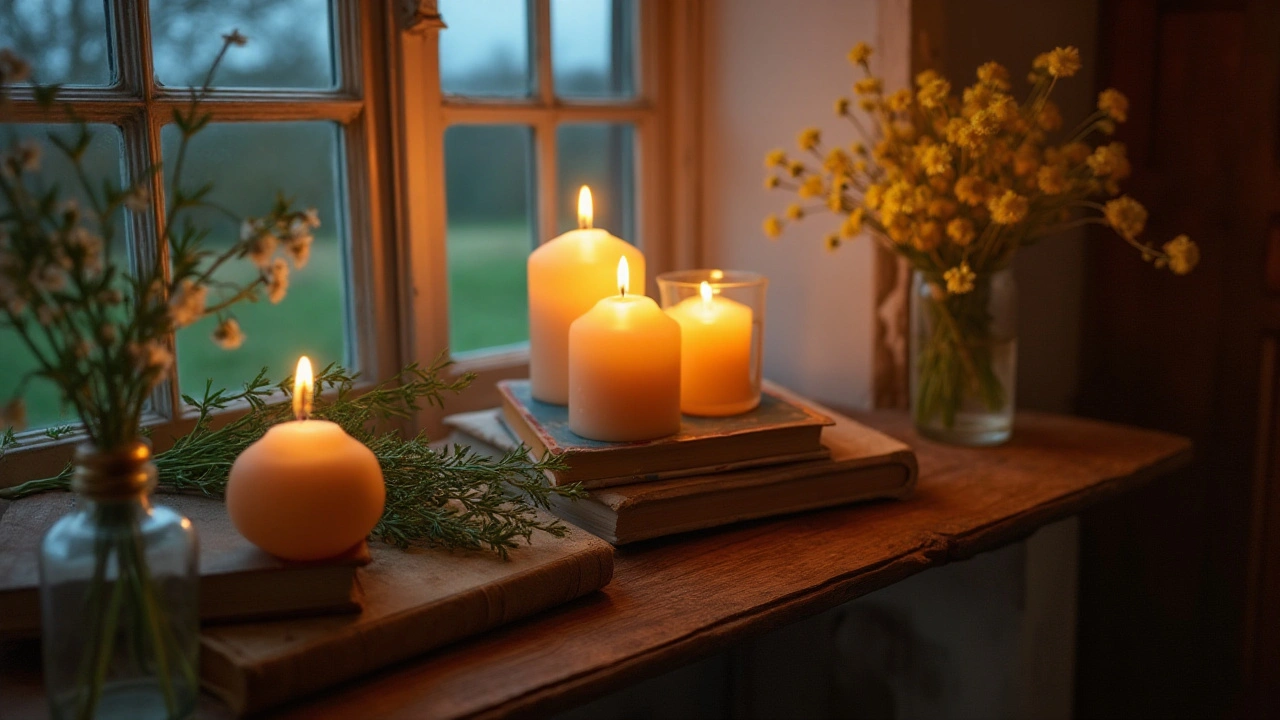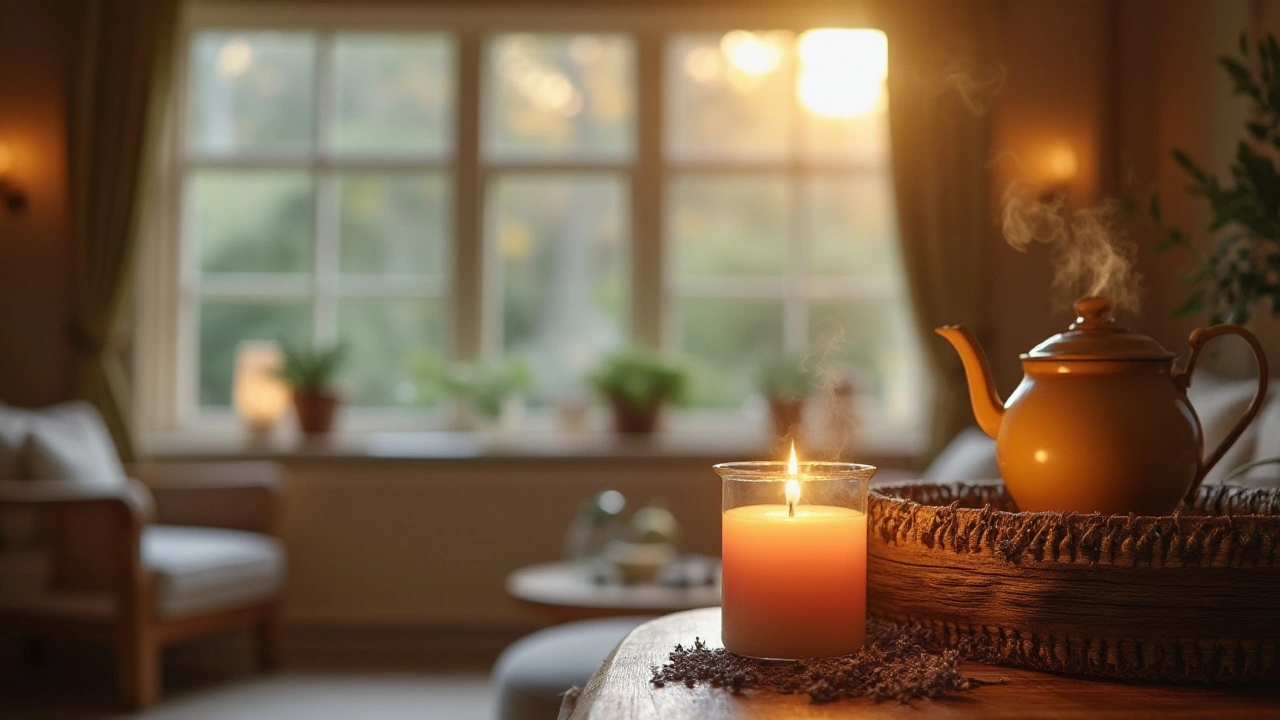Aromatherapy candles are all the rage these days, and it's easy to see why. With just a flick of a match, you can invite a world of tranquility into your home. More than just a pretty centerpiece, these candles are renowned for their ability to subtly influence our moods with just a whiff of their sweet fragrance.
Ever wondered how scents can affect your emotions? Certain smells have the power to calm, energize, or even transport you back to a warm memory. It's a sensory experience that effortlessly taps into the mind, bringing about an array of benefits for one's mental well-being.
The Science Behind Scent
When you breathe in the aroma of a candle, what's happening goes far beyond mere smell. Aromatherapy candles engage the limbic system—the brain's emotion center, which processes scent and transforms it into emotional and behavioral responses. This network, linked to the hippocampus and amygdala, plays a critical role in memory formation and emotional regulation. As the fragrance of a candle enters your nostrils and reaches your brain, it can influence emotions, ease anxiety, and even conjure memories. The magic lies in how quickly this happens, too—just one sniff can instantly change our mood.
The practice of scent-targeted therapy isn't new. Ancient cultures, from the Egyptians to the Greeks, recognized the connection between aroma and well-being. They utilized perfumed oils and incense, planting the seeds for the modern-day aromatherapy that we know and love. It's backed by research, too. Studies have revealed that scents like lavender can decrease stress levels and heart rate, while citrus scents may uplift moods and increase alertness. Such findings make candle therapy an incredible tool for emotional balance.
"Smell is a potent wizard that transports you across thousands of miles and all the years you have lived," wrote the esteemed writer Helen Keller, underlining the timeless power of scent.
Recognizing the potential of scented therapies, modern science has avidly delved into understanding how relaxation scents work. A fascinating area of study involves pheromones, which might explain why sandalwood is often associated with warmth and comfort. Neurotransmitters like serotonin are released when specific aromas are sensed, potentially boosting mood and overall well-being. It's fascinating that our noses have such a profound impact on our minds, creating a space for daily tranquility and peace.
In recent years, researchers have leaned on tools like functional MRI imaging to explore how scents activate brain regions associated with emotions. They've found that aromas—jasmine, for instance—can lead to enhanced moods and even improved cognitive responses. Such insights illustrate the vast potential of home ambiance improvements through scent. These tiny flickering flames, crafted with fragrant oils, serve not only as decor but as gateways to increased joy and relaxation.

Choosing Your Candle
When it comes to picking the perfect aromatherapy candles, knowing your options can truly enhance your experience. It's not just about grabbing the first candle that catches your eye. The world of scents is vast and varied, with each one offering unique qualities and benefits. Imagine stepping into a candle shop, taking in the lush medley of aromas. The choice can be overwhelming, but understanding the main types of candles available can help narrow down your options. There are soy candles, beeswax candles, paraffin candles, and even coconut wax varieties, each with their own features. Soy wax, for instance, is popular for its clean burn and sustainability. Those who prioritize eco-friendliness often lean towards these candles. Beeswax candles, on the other hand, offer a natural honey scent and are known to purify the air as they burn.
The fragrance of a candle plays a crucial role in aromatherapy. Different scents can evoke different emotions and memories, each designed to target specific feelings or needs. Lavender, for example, is renowned for its calming properties, making it ideal for those seeking to relieve stress or prepare for sleep. Peppermint is known to invigorate, often used to help sharpen focus and increase energy. If you're after a balanced ambiance, try looking for candles that blend several complementary fragrances. These can create a more rounded atmosphere and provide multiple benefits at once.
"Scents connect us with the deepest layers of our emotions and memories," says Dr. Kerstin Brandt, a renowned aroma therapist. "Choosing a fragrance that speaks to you can help create a personal sanctuary at home."
Remember, the size of the candle also affects its performance. Larger candles tend to release more scent and burn for longer, while smaller ones are perfect for quick relaxation sessions. For those dipping their toes into the aromatic world, experiment with different sizes and styles before committing to your favorite. And don't be shy about asking for samples; many experienced candle shops provide them for this very reason. Always check the quality of the wick. A good wick ensures a steady, even burn and maximizes the fragrance throw. Cotton wicks are generally recommended for a smoke-free experience, but wooden wicks can offer a cozy crackling sound that's lovely for cooler evenings.

Creating Relaxing Spaces
Transforming your home into a serene sanctuary is a delightfully enriching experience, especially with aromatherapy candles taking center stage. The art of creating a relaxing space is about more than just adding items to a room; it's about cultivating a soothing environment that nurtures all your senses. Aromatherapy candles, with their calming scents, have a unique ability to refine any area into a peaceful haven where stress can take a backseat.
Start by evaluating the space you plan to enhance. Identify areas where you often seek solace after a hectic day. Whether it's your living room, bedroom, or bathroom, consider how the space is currently used and what elements might enhance its tranquility. Arrange candle therapy sessions by selecting a few candles that complement each other in scent and color. Lavender and chamomile are perfect companions for inducing relaxation, while eucalyptus and mint reinvigorate tired senses. It's essential to tap into what each scent can do for your ambiance.
Placement of your candles is equally significant. Position them at eye level to ensure the scent disperses evenly throughout the room and is at a comforting visual height. Combine your scented candles with other calming elements such as soft lighting or nature sounds for a comprehensive sensory experience. If you're near windows, harness natural light by placing candles nearby and let flickering flames create a harmonious dance with daylight.
Integration of home ambiance accessories will also provide an additional layer of comfort. Soft textiles like blankets or curtains, along with nature-inspired decor such as stones or plants, amplify the soothing effects. Be mindful of color palettes as well; gentle earth tones or muted blues can seamlessly blend with the candlelight to evoke feelings of warmth and security. As expert interior designer Kelly Wearstler once said,
"Rooms should not be put together for show but to nourish one's wellbeing."
Some people find value in journaling or meditating in their candlelit space, allowing reflection and personal growth. Consider crafting a small nook with cushions and a journal nearby, so activities that deepen mental tranquility can naturally unfold. The goal is to make this place your personal retreat, where the outside noise fades into the background and calmness is the unwavering result.
Long-lasting relaxation doesn't require an extensive candle collection; a curated selection suited to your tastes brings more value than a multitude of mismatched scents. Regularly check your candle supplies and rotate new scents to avoid olfactory fatigue while keeping the experience fresh and invigorating. Embrace the transformative power of relaxation scents and see how easily your home can whisk you away to a realm of blissful relaxation day after day.

Tips for Candle Care
Proper care extends the life of your beloved aromatherapy candles, ensuring they remain a delightful companion in your quest for serenity. To start with, always remember to trim the wicks to about a quarter of an inch before lighting them. This small step can dramatically reduce soot production, providing a cleaner and healthier burn. It also helps to keep the wick centered, which is essential for an even burn, helping the wax to melt uniformly. An uneven burn can create craters and diminish the candle's lifespan significantly. Never underestimate the power of wick maintenance!
When it comes to safe burning practices, you should always place your candles on a heat-resistant surface, away from drafts, pets, or anything flammable. A common mistake many people make is burning the candle for too long. Ideally, limit the burn time to about three to four hours. This prevents the wick from mushrooming, which could lead to instability or uneven burns. Mushrooming can also affect the fragrance throw, which diminishes your relaxation scents experience.
One tip to maximize the aroma and ensure a long-lasting scent is called memory burn. On your candle's first lighting, allow the wax to melt all the way to the edge of the container. This sets the candle's 'memory' and helps to prevent tunneling, maintaining that lovely scent for future uses. It's like teaching the wax exactly how it should behave each time it is lit. Different fragrances have different lifespans as well; some might need a bit of coaxing to reach full potential.
Storing Your Aromatherapy Candles
Storage plays a significant role in maintaining the integrity of your candles, especially in hot climates like ours here in Perth. It's best to store them in a cool, dry place, away from direct sunlight. Direct exposure can cause the wax to sweat or fade the colors. Extreme temperatures might even make the wick harder to relight. A cupboard or cabinet away from windows is ideal. If you're absolutely in love with a particular scent and want it to last forever, consider storing your candle in an airtight container. This preserves the fragrance and ensures that when you're ready to light it again, it will smell just as fresh as the first time.
According to the National Candle Association, "Candle burning is an art that ensures ambiance and safety." This statement couldn't ring truer as understanding the science behind candle burn helps in maintaining not just the candle, but the experience it fosters.
Accidental wax spills happen sometimes, but cleaning up isn't as daunting as it seems. Wait for the wax to harden, then gently scrape it off with a non-abrasive object. If the spill is on a delicate surface, using a hairdryer to melt the wax before blotting it up with a paper towel can do the trick. A little patience and ingenuity go a long way in candle care!
